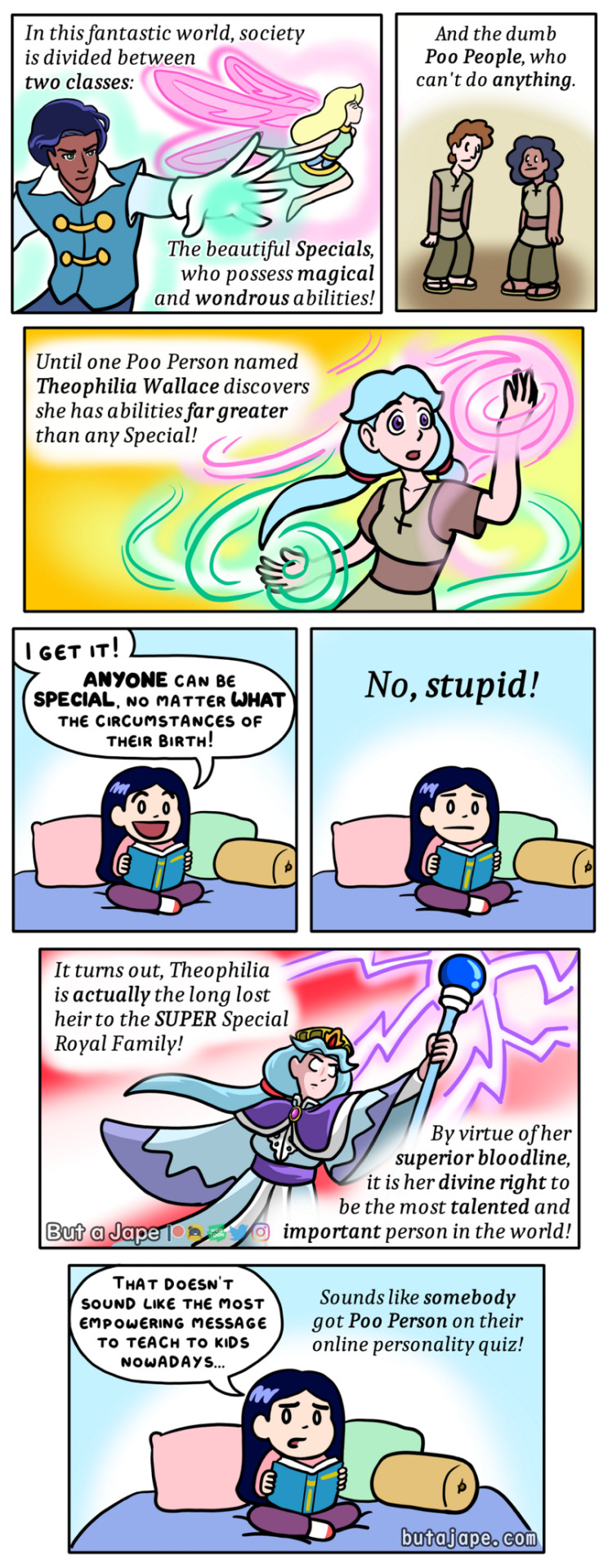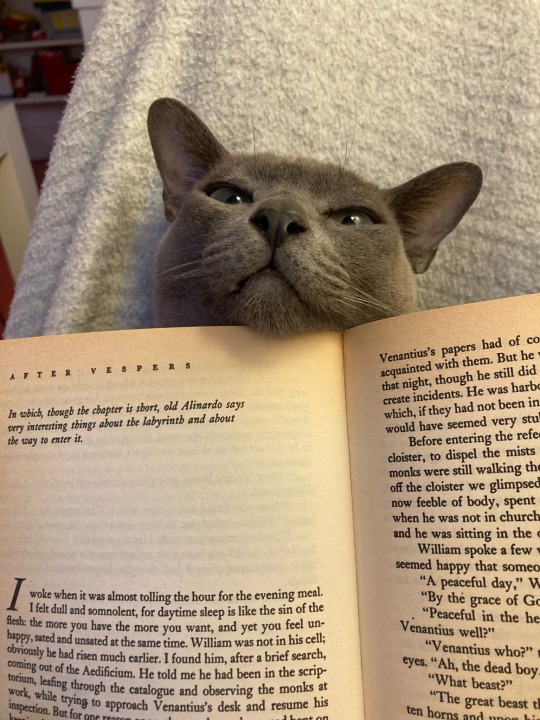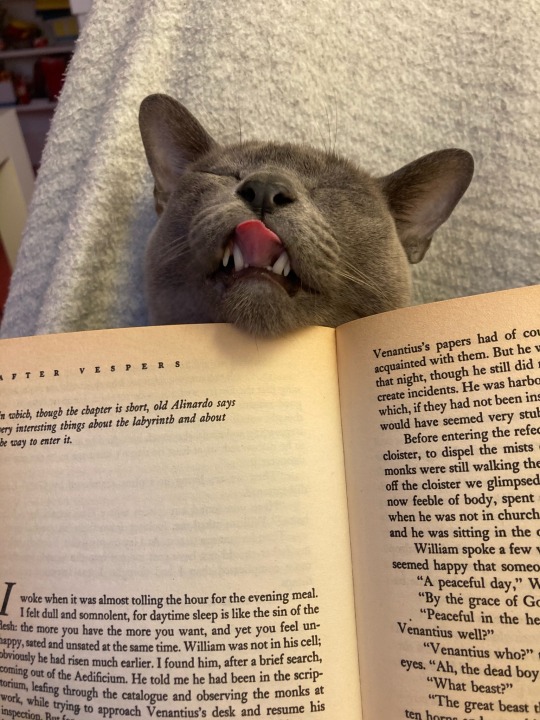Text
tbh in some cases calling my projects “wips” kinda feels like a joke, because it implies that it’s actually “in progress” rather than being a thing that plagues my brain every once in a while.
54K notes
·
View notes
Text
all the tips I found for drawing a fantasy map are like :) “here’s a strategy to draw the land masses! here’s how to plot islands!” :) and that’s wonderful and I love them all but ??? how? do y'all decide where to put cities/mountains/forests/towns I have my map and my land but I’m throwing darts to decide where the Main Citadel where the Action Takes Place is
95K notes
·
View notes
Photo



Solarpunk doesn’t often get a winter take. Here’s a Solarpunk greenhoused city.
We have the technology damn it!
2K notes
·
View notes
Text
As someone who spends a lot of time in the woods, I should tell you that most authors get it wrong. Here are ten realities about the woods that every writer should know.
384 notes
·
View notes
Text
writing hack: if you don't know how to transition from one scene to the next, end your chapter on one scene and start the new chapter on the next scene. no transitions needed!
4K notes
·
View notes
Photo
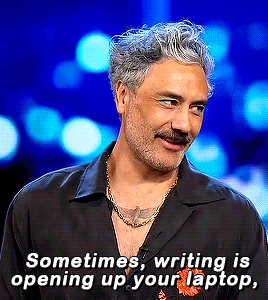
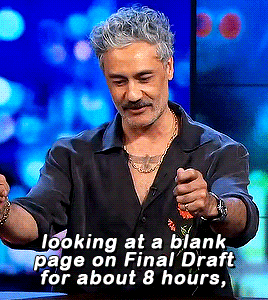

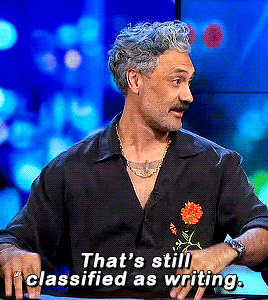
What’s writing, you know? What does writing actually mean?
105K notes
·
View notes
Text
“Why do people like a character who’s committed war crimes but hate this other character just because they’re annoying” because it’s fiction Susan, and being annoying in fiction is a greater sin than being a supervillain, because it won’t make me want to read about them. It isn’t difficult to understand
172K notes
·
View notes
Note
Do you have a secret method for being able to write so much/often? I'm a little jealous XD
I’ve debated how to answer this over the last few days. I know it’s being asked tongue-in-cheek, but it’s something I struggle with continually, so I wanted to give a bit of a more serious answer.
I wish I could offer a killer secret strategy, some kind of perfect formula, that unleashes our creativity and unlocks our motivation to write. But the truth is nothing like that. So here are the things I have learned in many years of practicing this particular art:
1. It gets easier. The more you do it, the easier words come. It’s better to lure the muse in with your work than wait for her to decide to show up.
2. But every day, the battle starts again. I can write every evening for a month straight and it’s no guarantee that I’ll be able to make myself write tomorrow.
3. See also: habit is a lie. I am psychologically incapable of habit. All there is a fresh start, every time.
4. You will fail in this goal a thousand times. And you will have to pick yourself up and try again a thousand times. Then you’ll fail once more. If you can’t find a way to stop guilting and shaming yourself for it, you’ll waste 90% of your energy fighting the negativity you’ve associated with sitting down to write, and you need that energy to motivate and encourage yourself, because…
5. There will always be ten million reasons not to do it. Choosing to write anyway is a decision you have to make more than once.
6. Falling in love with the sound of your own writing helps. A lot. Nobody can love your babies like you.
7. But being read by other people is an out-of-this-world high, and it’s ok to let that power you, as long as you don’t let it own you.
8. Practical advice: It’s easier to write today if I wrote yesterday. And it’s easier to write today if I wrote two days ago than if I last wrote a week ago. When the not-writing gets to be around a month, it’s very hard and requires a proper plan to ease back in.
9. Writing doesn’t have to be writing writing. Just touching the document, editing, outlining, taking some kind of tangible action to advance the work, can reset that timer and get you to another day. Likewise you don’t need to write two thousand words; even ten can work just fine.
10. Sometimes the writing has to come before the laundry. If you don’t make the things that feed your soul at least an occasional priority over the things that take care of the rest of you, they start to shrivel up.
Lastly: If writing is something you need to do with your life, you know it. And if it is, it’s worth it.
819 notes
·
View notes
Text
Two identical infants lay in the cradle. “One you bore, the other is a Changeling. Choose wisely,” the Fae’s voice echoed from the shadows. “I’m taking both my children,” the mother said defiantly.
126K notes
·
View notes
Text
Story Structures for your Next WIP
hello, hello. this post will be mostly for my notes. this is something I need in to be reminded of for my business, but it can also be very useful and beneficial for you guys as well.
everything in life has structure and storytelling is no different, so let’s dive right in :)
First off let’s just review what a story structure is :
a story is the backbone of the story, the skeleton if you will. It hold the entire story together.
the structure in which you choose your story will effectively determine how you create drama and depending on the structure you choose it should help you align your story and sequence it with the conflict, climax, and resolution.
1. Freytag's Pyramid
this first story structure i will be talking about was named after 19th century German novelist and playwright.
it is a five point structure that is based off classical Greek tragedies such as Sophocles, Aeschylus and Euripedes.
Freytag's Pyramid structure consists of:
Introduction: the status quo has been established and an inciting incident occurs.
Rise or rising action: the protagonist will search and try to achieve their goal, heightening the stakes,
Climax: the protagonist can no longer go back, the point of no return if you will.
Return or fall: after the climax of the story, tension builds and the story inevitably heads towards...
Catastrophe: the main character has reached their lowest point and their greatest fears have come into fruition.
this structure is used less and less nowadays in modern storytelling mainly due to readers lack of appetite for tragic narratives.
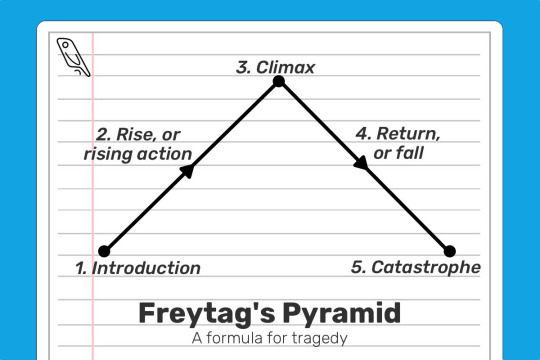
2. The Hero's Journey
the hero's journey is a very well known and popular form of storytelling.
it is very popular in modern stories such as Star Wars, and movies in the MCU.
although the hero's journey was inspired by Joseph Campbell's concept, a Disney executive Christopher Vogler has created a simplified version:
The Ordinary World: The hero's everyday routine and life is established.
The Call of Adventure: the inciting incident.
Refusal of the Call: the hero / protagonist is hesitant or reluctant to take on the challenges.
Meeting the Mentor: the hero meets someone who will help them and prepare them for the dangers ahead.
Crossing the First Threshold: first steps out of the comfort zone are taken.
Tests, Allie, Enemies: new challenges occur, and maybe new friends or enemies.
Approach to the Inmost Cave: hero approaches goal.
The Ordeal: the hero faces their biggest challenge.
Reward (Seizing the Sword): the hero manages to get ahold of what they were after.
The Road Back: they realize that their goal was not the final hurdle, but may have actually caused a bigger problem than before.
Resurrection: a final challenge, testing them on everything they've learned.
Return with the Elixir: after succeeding they return to their old life.
the hero's journey can be applied to any genre of fiction.

3. Three Act Structure:
this structure splits the story into the 'beginning, middle and end' but with in-depth components for each act.
Act 1: Setup:
exposition: the status quo or the ordinary life is established.
inciting incident: an event sets the whole story into motion.
plot point one: the main character decided to take on the challenge head on and she crosses the threshold and the story is now progressing forward.
Act 2: Confrontation:
rising action: the stakes are clearer and the hero has started to become familiar with the new world and begins to encounter enemies, allies and tests.
midpoint: an event that derails the protagonists mission.
plot point two: the hero is tested and fails, and begins to doubt themselves.
Act 3: Resolution:
pre-climax: the hero must chose between acting or failing.
climax: they fights against the antagonist or danger one last time, but will they succeed?
Denouement: loose ends are tied up and the reader discovers the consequences of the climax, and return to ordinary life.
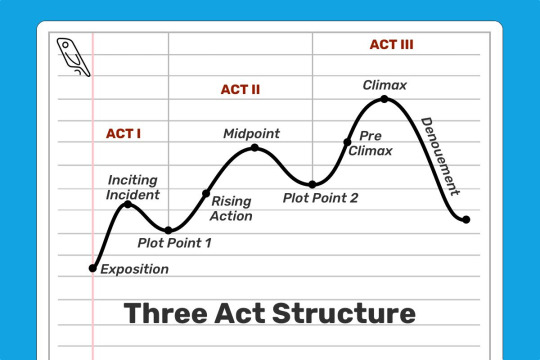
4. Dan Harmon's Story Circle
it surprised me to know the creator of Rick and Morty had their own variation of Campbell's hero's journey.
the benefit of Harmon's approach is that is focuses on the main character's arc.
it makes sense that he has such a successful structure, after all the show has multiple seasons, five or six seasons? i don't know not a fan of the show.
the character is in their comfort zone: also known as the status quo or ordinary life.
they want something: this is a longing and it can be brought forth by an inciting incident.
the character enters and unfamiliar situation: they must take action and do something new to pursue what they want.
adapt to it: of course there are challenges, there is struggle and begin to succeed.
they get what they want: often a false victory.
a heavy price is paid: a realization of what they wanted isn't what they needed.
back to the good old ways: they return to their familiar situation yet with a new truth.
having changed: was it for the better or worse?
i might actually make a operate post going more in depth about dan harmon's story circle.
5. Fichtean Curve:
the fichtean curve places the main character in a series of obstacles in order to achieve their goal.
this structure encourages writers to write a story packed with tension and mini-crises to keep the reader engaged.
The Rising Action
the story must start with an inciting indecent.
then a series of crisis arise.
there are often four crises.
2. The Climax:
3. Falling Action
this type of story telling structure goes very well with flash-back structured story as well as in theatre.
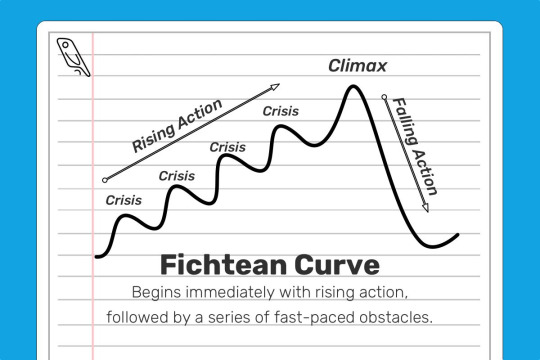
6. Save the Cat Beat Sheet:
this is another variation of a three act structure created by screenwriter Blake Snyder, and is praised widely by champion storytellers.
Structure for Save the Cat is as follows: (the numbers in the brackets are for the number of pages required, assuming you're writing a 110 page screenplay)
Opening Image [1]: The first shot of the film. If you’re starting a novel, this would be an opening paragraph or scene that sucks readers into the world of your story.
Set-up [1-10]. Establishing the ‘ordinary world’ of your protagonist. What does he want? What is he missing out on?
Theme Stated [5]. During the setup, hint at what your story is really about — the truth that your protagonist will discover by the end.
Catalyst [12]. The inciting incident!
Debate [12-25]. The hero refuses the call to adventure. He tries to avoid the conflict before they are forced into action.
Break into Two [25]. The protagonist makes an active choice and the journey begins in earnest.
B Story [30]. A subplot kicks in. Often romantic in nature, the protagonist’s subplot should serve to highlight the theme.
The Promise of the Premise [30-55]. Often called the ‘fun and games’ stage, this is usually a highly entertaining section where the writer delivers the goods. If you promised an exciting detective story, we’d see the detective in action. If you promised a goofy story of people falling in love, let’s go on some charmingly awkward dates.
Midpoint [55]. A plot twist occurs that ups the stakes and makes the hero’s goal harder to achieve — or makes them focus on a new, more important goal.
Bad Guys Close In [55-75]. The tension ratchets up. The hero’s obstacles become greater, his plan falls apart, and he is on the back foot.
All is Lost [75]. The hero hits rock bottom. He loses everything he’s gained so far, and things are looking bleak. The hero is overpowered by the villain; a mentor dies; our lovebirds have an argument and break up.
Dark Night of the Soul [75-85-ish]. Having just lost everything, the hero shambles around the city in a minor-key musical montage before discovering some “new information” that reveals exactly what he needs to do if he wants to take another crack at success. (This new information is often delivered through the B-Story)
Break into Three [85]. Armed with this new information, our protagonist decides to try once more!
Finale [85-110]. The hero confronts the antagonist or whatever the source of the primary conflict is. The truth that eluded him at the start of the story (established in step three and accentuated by the B Story) is now clear, allowing him to resolve their story.
Final Image [110]. A final moment or scene that crystallizes how the character has changed. It’s a reflection, in some way, of the opening image.
(all information regarding the save the cat beat sheet was copy and pasted directly from reedsy!)
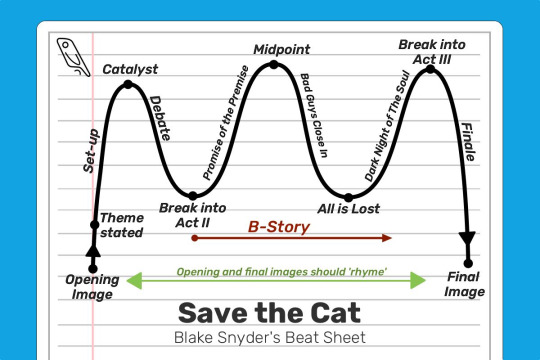
7. Seven Point Story Structure:
this structure encourages writers to start with the at the end, with the resolution, and work their way back to the starting point.
this structure is about dramatic changes from beginning to end
The Hook. Draw readers in by explaining the protagonist’s current situation. Their state of being at the beginning of the novel should be in direct contrast to what it will be at the end of the novel.
Plot Point 1. Whether it’s a person, an idea, an inciting incident, or something else — there should be a "Call to Adventure" of sorts that sets the narrative and character development in motion.
Pinch Point 1. Things can’t be all sunshine and roses for your protagonist. Something should go wrong here that applies pressure to the main character, forcing them to step up and solve the problem.
Midpoint. A “Turning Point” wherein the main character changes from a passive force to an active force in the story. Whatever the narrative’s main conflict is, the protagonist decides to start meeting it head-on.
Pinch Point 2. The second pinch point involves another blow to the protagonist — things go even more awry than they did during the first pinch point. This might involve the passing of a mentor, the failure of a plan, the reveal of a traitor, etc.
Plot Point 2. After the calamity of Pinch Point 2, the protagonist learns that they’ve actually had the key to solving the conflict the whole time.
Resolution. The story’s primary conflict is resolved — and the character goes through the final bit of development necessary to transform them from who they were at the start of the novel.
(all information regarding the seven point story structure was copy and pasted directly from reedsy!)

i decided to fit all of them in one post instead of making it a two part post.
i hope you all enjoy this post and feel free to comment or reblog which structure you use the most, or if you have your own you prefer to use! please share with me!
if you find this useful feel free to reblog on instagram and tag me at perpetualstories
Follow my tumblr and instagram for more writing and grammar tips and more!
13K notes
·
View notes
Text
I think an important instinct you have to build up when you read/watch sci-fi is discerning which things are givens. If Arrival tells you that the alien language is atemporal, it is, that's not a puzzle for you to pick apart, it's a prerequisite to getting the rest of the story. When I talk sci-fi with people who don't consume a lot of it this seems to be a thing they get hung up on.
48K notes
·
View notes
Text
Things that are still writing even if you don’t think they are (an incomplete list)
thinking about a story
creating a new document
brainstorming
researching
thinking of a title
explaining your story to someone else
reading other stories and noticing things like word choice, sentence structure, plot development, characterization
thinking of a great line that doesn’t have a story yet
getting a picture in your mind that you want to put into words someday
being inspired by others, even if you don’t know what to do with that inspiration yet
making notes about how you want to tag your work
editing
cutting out lines or scenes that don’t work
stopping work on something that isn’t working right now
starting over
writing a summary
rewriting something you’ve written before
23K notes
·
View notes
Text
Jane Austen really said ‘I respect the “I can fix him” movement but that’s just not me. He’ll fix himself if knows what’s good for him’ and that’s why her works are still calling the shots today.
224K notes
·
View notes
Text
every time I see the words “Tolkien ripoff” in reference to fantasy I laugh, because while there’s a lot of Tolkien ripoff in worldbuilding it almost never crops up in plot or theme or characterization
like
where are my stories about the decay of the world from the glory of days gone by?
where’s the motif of limb loss?
where’s the longing for the return of something worth following?
where are the bloodthirsty oaths that tear sanity to shreds?
where are the evil spirits who try and destroy the gods with steampunk V-1 buzz bombs (looking at you, The Lost Road)?
where’s my continent-wide dialectical shift ending in massive arguments over the proper pronunciation of a name? where’s my family drama centered around sparkly rocks? where are my dragons the size of mountain ranges?
49K notes
·
View notes
